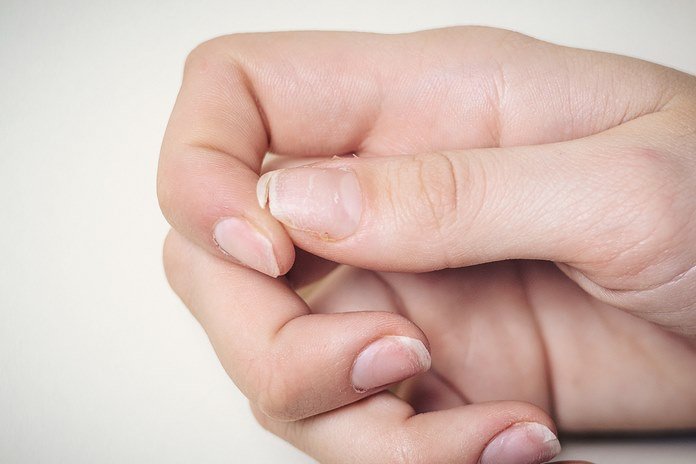Osteopenia Symptoms

Osteopenia mostly does not lead to any symptoms or signs unless it progresses to osteoporosis. Some people who are having osteopenia rarely might experience weakness or bone pain. The condition is normally detected when an individual has a BMD screening. Therefore, osteopenia does not cause symptoms normally. Losing the density of bone does not lead to pain. (2)
How do you come to know that you are having osteopenia? There are some telltale symptoms in the following:
- Brittle fingernails
Furthermore, if you are noticing that your fingernails are consistently breaking or quite easily than before, you might be experiencing osteopenia.
- Height loss
If you are noticing that you are shrinking, it might be because of a painless (yes, maybe!) spinal fracture occurring in your back.
- Retreating gum line
While it does not mean you have osteopenia definitely when the jaw bone reduces the density it might take gum with it.
- Reduced grip strength
If you find yourself struggling with that peanut butter or Nutella jar lid or holding extra tight on the tub to not fall, it might mean that you are having osteopenia.
Know yourself some more with the symptoms and signs of osteopenia mentioned above. You must not panic right away if you start experiencing any of such symptoms as a one-off. But if they begin to happen consistently, visit or talk to your doctor and have a DEXA scan. Most people having osteopenia have no signs and symptoms at all and are not aware of such a condition. When they might happen,
some of the most occurring signs and symptoms of osteopenia consist of:
- Problem while exercising typically because of injuries or pains
- Dealing with aches and other bone pains that might affect the tissue that is near your bones, consisting of the joints
- Suffering from each or more bone breaks or fractures. When a bone breakage happens, it is more likely to impact someone’s ankle, hip wrist, or spine.
When osteopenia develops and progresses to osteoporosis, the symptoms might consist of losing shrinking/height, because of the weakening of the vertebrae (the bones of the spine). While other symptoms of osteoporosis consist of:
- Bad posture, consisting of a hunched or stooped back
- All of the symptoms of osteopenia mentioned earlier
Lower mobility-limited range of motion, and difficulty with everyday activities because of the pain. Most people having excessive bone loss require aid from a loved one or an aid to perform things such as get around; cook etc. this might lead to psychological variations such as loss of hope, depression and social isolation, etc. Osteopenia is a condition of bone that is categorized by a reducing bone density but the density is not low enough to justify an osteoporosis diagnosis. Osteopenia might cause the weakening of bone and an increased chance of the breakage of bone (such as a bone fracture).
Osteopenia shows a reducing degree of loss of bone in comparison to osteoporosis. When there are some other risk factors shown (such as smoking, corticosteroid medication usage, and other conditions of bone) that might also raise the chance of bone fractures, then medications might be required. Osteopenia is an early symptom of bone density loss that is less serious in comparison to osteoporosis. While individuals having osteopenia are somewhat at increasing risk for fractures of bone, osteoporosis carries a much higher risk of bone fractures.

